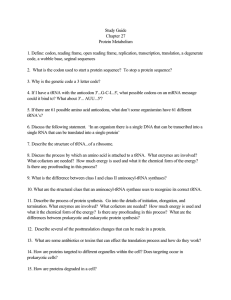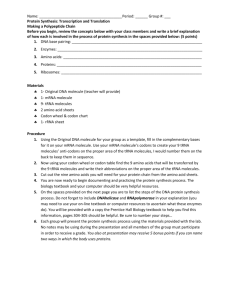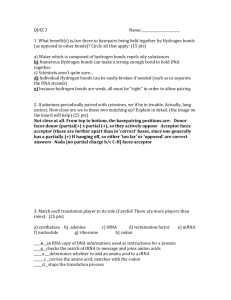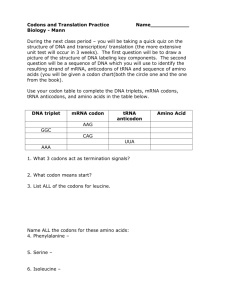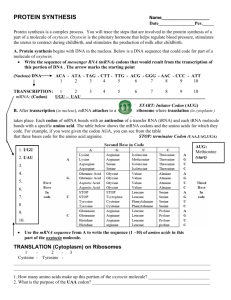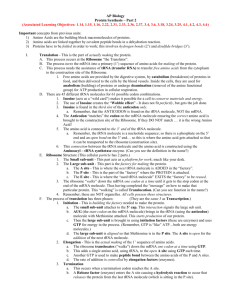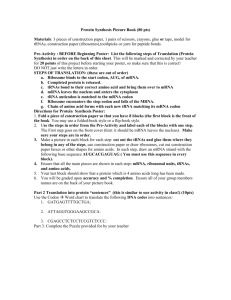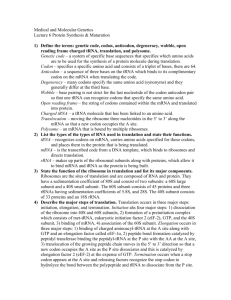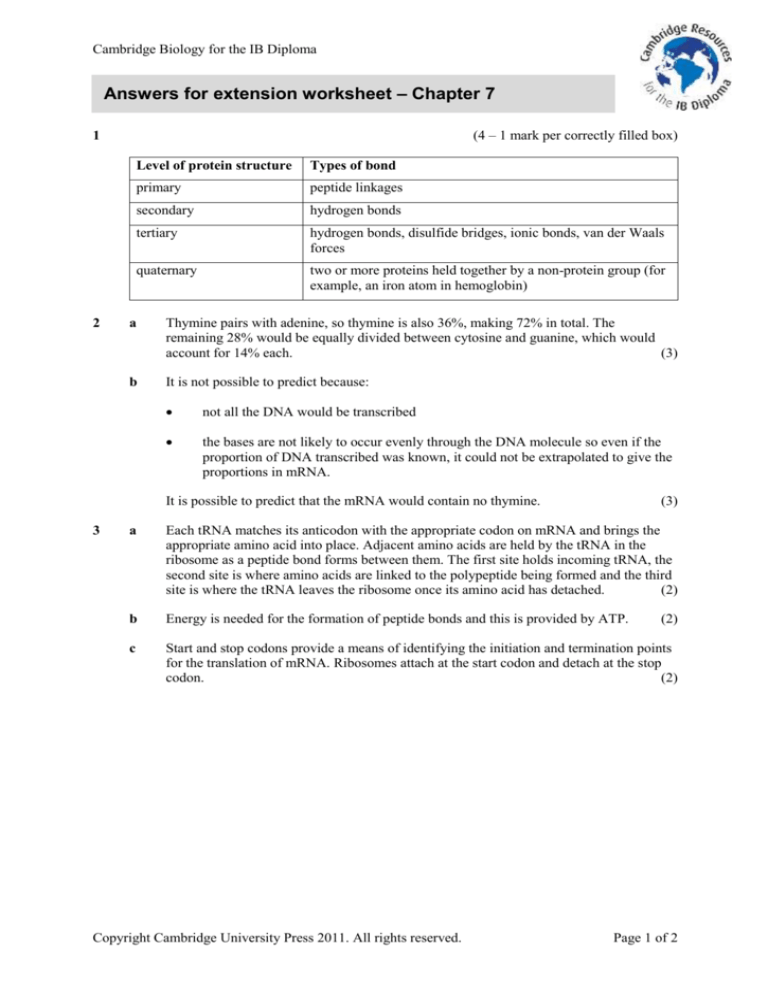
Cambridge Biology for the IB Diploma
Answers for extension worksheet – Chapter 7
(4 – 1 mark per correctly filled box)
1
2
Level of protein structure
Types of bond
primary
peptide linkages
secondary
hydrogen bonds
tertiary
hydrogen bonds, disulfide bridges, ionic bonds, van der Waals
forces
quaternary
two or more proteins held together by a non-protein group (for
example, an iron atom in hemoglobin)
a
Thymine pairs with adenine, so thymine is also 36%, making 72% in total. The
remaining 28% would be equally divided between cytosine and guanine, which would
account for 14% each.
(3)
b
It is not possible to predict because:
not all the DNA would be transcribed
the bases are not likely to occur evenly through the DNA molecule so even if the
proportion of DNA transcribed was known, it could not be extrapolated to give the
proportions in mRNA.
It is possible to predict that the mRNA would contain no thymine.
3
(3)
a
Each tRNA matches its anticodon with the appropriate codon on mRNA and brings the
appropriate amino acid into place. Adjacent amino acids are held by the tRNA in the
ribosome as a peptide bond forms between them. The first site holds incoming tRNA, the
second site is where amino acids are linked to the polypeptide being formed and the third
site is where the tRNA leaves the ribosome once its amino acid has detached.
(2)
b
Energy is needed for the formation of peptide bonds and this is provided by ATP.
c
Start and stop codons provide a means of identifying the initiation and termination points
for the translation of mRNA. Ribosomes attach at the start codon and detach at the stop
codon.
(2)
Copyright Cambridge University Press 2011. All rights reserved.
(2)
Page 1 of 2
Cambridge Biology for the IB Diploma
4
5
a
The 3' end is the point at which an amino acid attaches to the tRNA.
b
The hydrogen bonds hold the molecule in shape so that it retains its ‘clover leaf’ shape
and can bind to mRNA and an amino acid.
(1)
c
The tRNA bases include A, C, G and U in a sequence specified by the genetic code.
d
The anticodon is a triplet of bases unique to each tRNA, which pairs with a codon on
mRNA.
(1)
a
i
The allosteric site of an enzyme is the site (not the active site) to which a regulator
molecule binds.
(1)
ii
A non-competitive inhibitor binds to an enzyme molecule at a site away from the
active site.
(1)
iii
The active site is the site at which the substrate molecule(s) binds.
(1)
iv
End-product inhibition occurs when rising levels of a product of a metabolic
reaction affect an enzyme earlier in the pathway and turn off the pathway.
(1)
v
b
(1)
(1)
Rising levels of a product cause the reaction to be ‘switched off’, so that the
product is no longer formed. As levels of the product fall, the reaction is ‘switched
on’ again, and production resumes.
(1)
The shape and bonding between enzyme and substrate are specific. If the substrate is not
the correct shape and does not have appropriate charges on its molecule, it will not bind
to the active site and the reaction will not proceed.
(2)
Copyright Cambridge University Press 2011. All rights reserved.
Page 2 of 2

